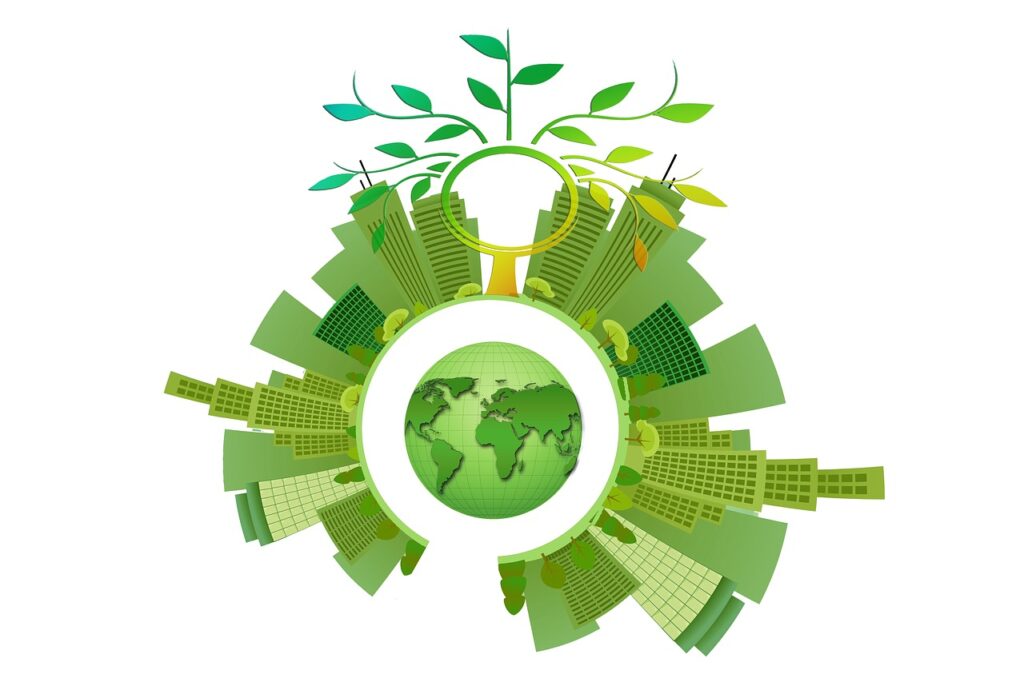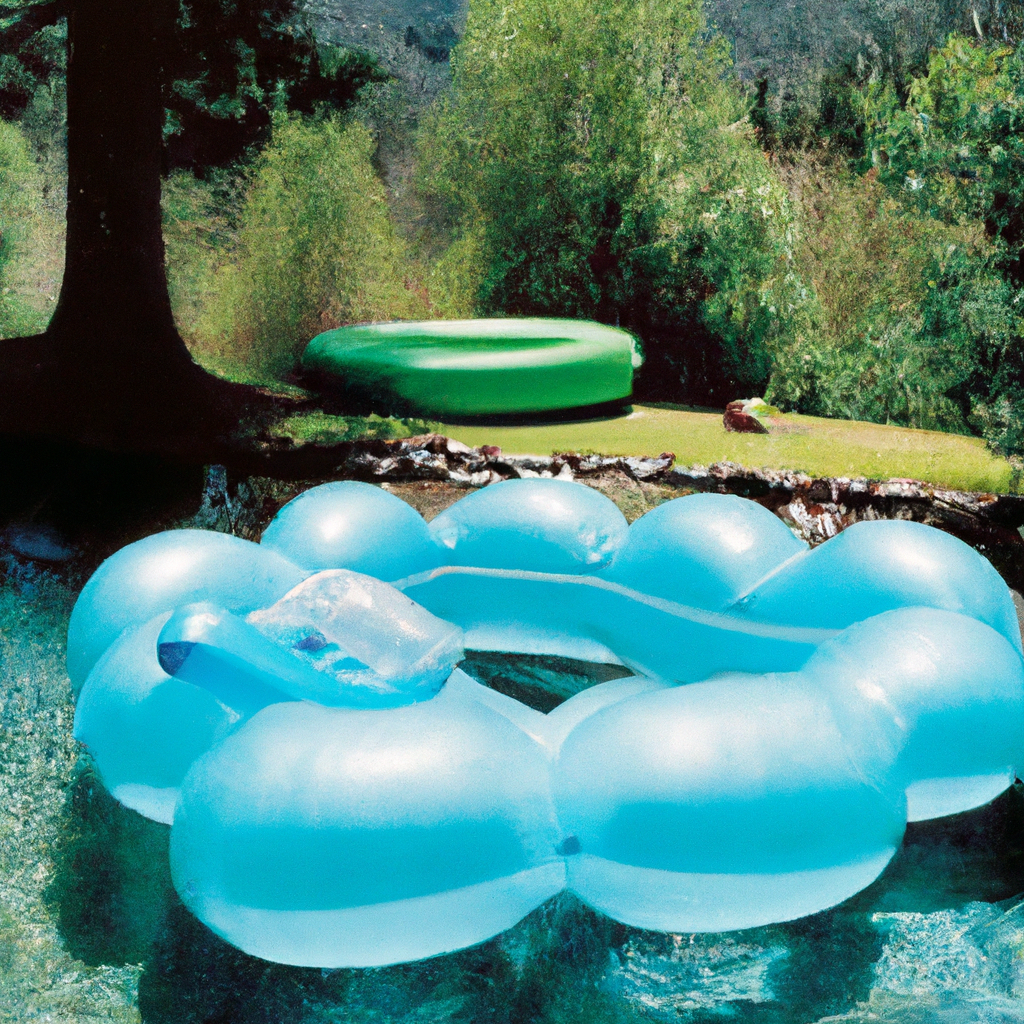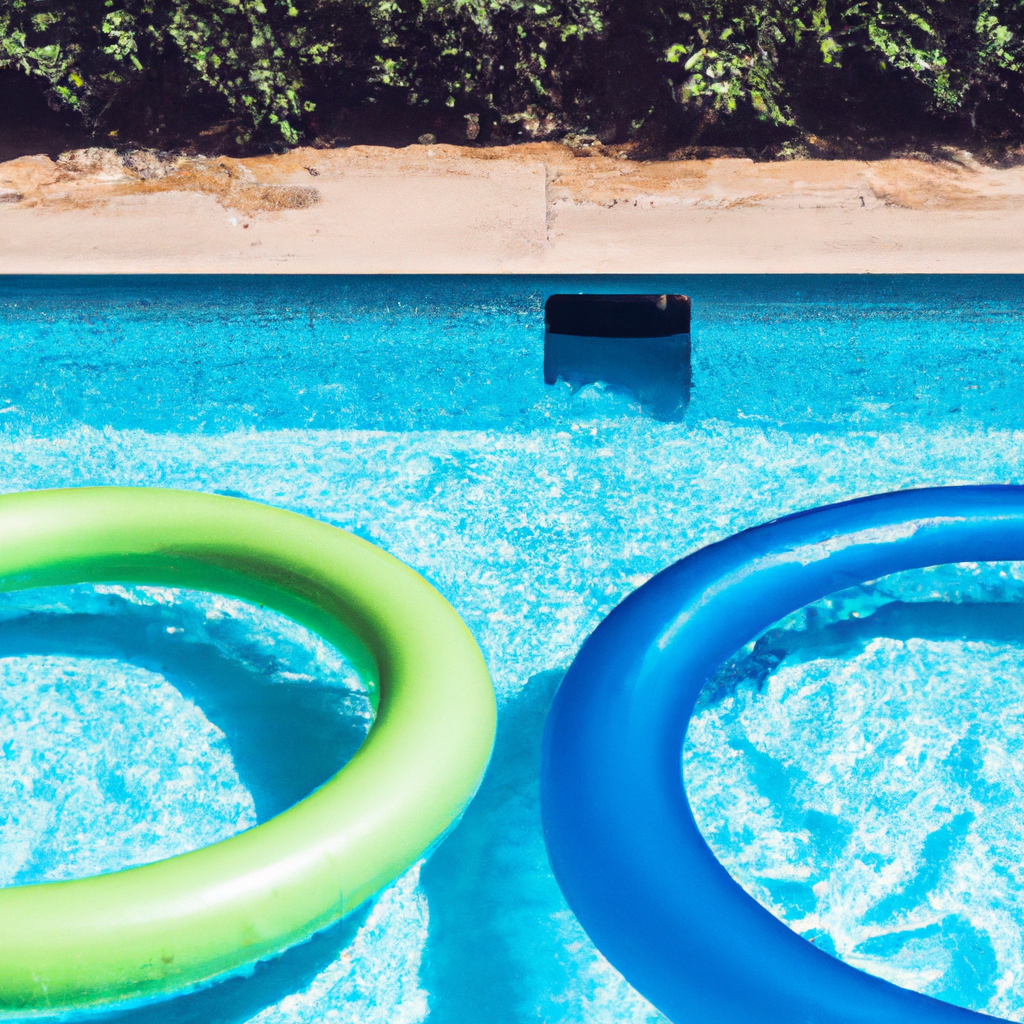Are you ready to dive into the fascinating world of inflatable pools? Whether you’re a pool enthusiast or just looking for a fun way to beat the summer heat, the connection between inflatable pools and sustainable development might surprise you. In recent years, there has been a growing interest in environmentally-friendly alternatives to traditional pools, and inflatable pools have emerged as a popular choice. They offer a range of benefits, including their portability, cost-effectiveness, and minimal environmental impact. So, get ready to explore the countless possibilities and discover how inflatable pools can be a game-changer in the world of sustainable development.
1. Environmental Impact of Inflatable Pools
Inflatable pools offer a fun and convenient way to beat the heat during the summer months, but it’s important to consider their potential environmental impact. By understanding the key aspects of this impact, we can make informed decisions to minimize any negative effects.
1.1 Water Usage
One of the main concerns with inflatable pools is the amount of water they require. Filling up a pool, especially a large one, can result in significant water consumption. This can pose a strain on local water supplies, especially in areas experiencing drought or water scarcity.
To minimize water usage, there are a few strategies you can employ. Firstly, consider the size of the pool you choose. Opting for a smaller pool means less water will be needed to fill it. Additionally, using a pool cover when the pool is not in use can help reduce evaporation, therefore conserving water.
1.2 Energy Consumption
In addition to water usage, inflatable pools can also contribute to energy consumption. This is primarily related to the use of pumps and filtration systems to keep the water clean and safe for swimming. These devices often run on electricity, which can have a negative impact on the environment if not managed efficiently.
One way to reduce energy consumption is by using energy-efficient pumps and filtration systems. Look for models that are specifically designed to minimize energy usage while still maintaining water quality. Additionally, consider reducing the number of hours these systems run each day, especially if the pool is not being actively used.
1.3 Chemicals and Wastewater
Maintaining proper water quality in an inflatable pool often requires the use of chemicals such as chlorine. While these chemicals are necessary to prevent the growth of harmful bacteria and ensure a safe swimming experience, their use can have a negative impact on the environment.
When it comes to using chemicals in your pool, it’s essential to strike a balance. Follow the recommended guidelines for chemical dosage and avoid overchlorination. Additionally, consider using alternative water treatment methods, such as saltwater systems, which rely on salt instead of chlorine.
It’s also important to properly dispose of wastewater. Emptying the pool directly into storm drains or natural water bodies can introduce chemicals and pollutants into the environment. Instead, consider draining the water onto grassy areas or using it to water plants, ensuring the water has time to percolate into the ground before reaching any water bodies.
1.4 Plastic Waste
Another environmental concern associated with inflatable pools is the production and disposal of plastic waste. Inflatable pools are typically made from PVC or vinyl, which are not biodegradable and can persist in the environment for a long time.
To reduce plastic waste, consider investing in inflatable pools made from recycled or eco-friendly materials. These options are becoming more readily available and offer a more sustainable alternative to traditional inflatable pools. Additionally, when the pool reaches the end of its lifespan, make sure to properly dispose of it by recycling it, if possible.
2. Sustainable Materials for Inflatable Pools
To address the issue of plastic waste, many companies are now exploring the use of sustainable materials for inflatable pools. By opting for these alternatives, we can minimize our ecological footprint and support a more sustainable industry.
2.1 Recycled Materials
Using recycled materials in the production of inflatable pools is an effective way to reduce the demand for new plastic. Instead of relying on virgin PVC or vinyl, manufacturers can utilize recycled plastics, such as post-consumer or post-industrial waste. This not only diverts plastic from ending up in landfills but also saves energy and resources that would have been used in the production of new plastics.
When purchasing an inflatable pool, look for products that explicitly state they are made from recycled materials. This helps support companies that prioritize sustainability and encourages others to follow suit.
2.2 Biodegradable Materials
Another sustainable option for inflatable pools is the use of biodegradable materials. These materials are designed to break down naturally in the environment, reducing the potential for long-term pollution and waste accumulation.
While biodegradable materials may still be in the early stages of development for inflatable pools, it’s an area of research and innovation that shows great promise. As technology advances, we can expect to see more options for biodegradable inflatable pools in the market.
2.3 Renewable Resources
Utilizing renewable resources in the production of inflatable pools is another way to promote sustainability. Instead of relying solely on traditional materials like plastics, manufacturers can explore options like natural fibers or organic fabrics.
For example, inflatable pools made from organic cotton or bamboo offer a renewable alternative to synthetic materials. These natural resources have a lower environmental impact and can be grown and harvested in a sustainable manner.
By supporting inflatable pools made from sustainable materials, we can contribute to the development and adoption of more environmentally friendly practices within the industry.

3. Energy-Efficient Inflatable Pool Designs
Reducing energy consumption is crucial for minimizing the environmental impact of inflatable pools. By investing in energy-efficient designs and technologies, we can enjoy our pools while keeping our ecological footprint to a minimum.
3.1 Solar-Powered Pool Heating
Heating inflatable pools can be a major source of energy consumption, especially for those located in cooler climates. However, solar-powered pool heating systems offer a sustainable alternative. These systems utilize the power of the sun to warm the water, reducing the need for electricity or gas-powered heaters.
Solar heaters consist of solar panels that capture solar energy and transfer it to the pool water through a circulation system. While the initial investment may be higher compared to traditional heaters, solar-powered pool heating can result in substantial energy savings in the long run, making it a worthwhile consideration for eco-conscious pool owners.
3.2 Energy-Efficient Filtration Systems
Ensuring clean and clear water is essential for an enjoyable swimming experience. However, the pumps and filters used to achieve this can consume a significant amount of energy.
When selecting a filtration system for your inflatable pool, look for energy-efficient models that are specifically designed to minimize electricity usage. Advances in technology have led to the development of pumps and filters that are not only highly efficient but also capable of maintaining water quality effectively.
Additionally, consider using variable-speed pumps that allow you to adjust the speed and power consumption based on your needs. This flexibility can help optimize energy usage and reduce overall operating costs.
By choosing energy-efficient pool heating and filtration systems, we can significantly reduce the environmental impact of our inflatable pools and make a positive contribution to sustainable development.
4. Water Conservation Strategies for Inflatable Pools
Conserving water is an important aspect of sustainable pool ownership. By implementing water-saving strategies, we can minimize water consumption and help preserve this precious resource.
4.1 Rainwater Collection
One effective strategy for water conservation is rainwater collection. Instead of relying solely on treated tap water to fill and maintain your inflatable pool, consider capturing rainwater for this purpose.
Installing a rainwater harvesting system allows you to collect and store rainwater from rooftops or other surfaces. This water can then be used to fill up your pool, reducing your reliance on municipal water supplies. Additionally, rainwater is often free from chemicals typically found in tap water, making it a more natural and environmentally friendly option for your pool.
If you choose to implement a rainwater collection system, make sure to follow local guidelines and regulations to ensure safe and responsible water use.
4.2 Water-saving Filters and Pumps
Another way to conserve water is by using water-saving filters and pumps. These systems are designed to minimize water loss during the filtration process, reducing the need for frequent backwashing or water replacement.
Look for filters and pumps that are specifically labeled as water-saving or water-efficient. These devices utilize innovative technologies such as fine mesh filters or adjustable flow rates to minimize water waste. By investing in these systems, you can maintain water quality without excessive water usage.
Additionally, consider using pool covers when the pool is not in use. This helps to prevent evaporation, which can result in significant water loss over time. With the pool covered, you’ll be able to conserve water and reduce the need for frequent refills.
By implementing water conservation strategies, we can reduce our impact on local water supplies and contribute to a more sustainable approach to pool ownership.

5. Artificial Intelligence and Inflatable Pool Maintenance
Advancements in technology, particularly in the field of artificial intelligence (AI), are revolutionizing the way we maintain and manage inflatable pools. By harnessing the power of AI, we can improve efficiency and reduce the resources required for pool maintenance.
5.1 Smart Sensors for Water Quality Monitoring
AI-powered smart sensors offer an innovative solution for monitoring water quality in inflatable pools. These sensors are designed to continuously measure key parameters such as pH levels, chlorine levels, and temperature. By collecting real-time data, they can provide valuable insights into the condition of the water and alert you to any imbalances or potential issues.
By using smart sensors, you can optimize the use of chemicals and reduce unnecessary water testing. This not only saves resources but also ensures a safer and more enjoyable swimming experience.
5.2 Automated pH and Chlorine Control
Maintaining the proper pH and chlorine levels in your inflatable pool is crucial for water safety. Traditional methods of testing and adjusting these levels can be time-consuming and require manual intervention. However, AI-powered systems can automate this process for you.
Automated pH and chlorine control systems use AI algorithms to continuously monitor water conditions and adjust chemical dosages as needed. This eliminates the guesswork and minimizes the risk of human error. By relying on automated systems, you can ensure optimal water quality while reducing the time and effort required for maintenance.
Incorporating AI technology into inflatable pool maintenance not only streamlines the process but also reduces the need for excessive chemical usage. This results in a more efficient and environmentally friendly approach to pool management.
6. Inflatable Pools and Permaculture
Permaculture principles can be applied to the design and maintenance of inflatable pool areas, creating a harmonious and sustainable ecosystem that supports native plants and wildlife.
6.1 Designing Pool Areas to Support Ecosystems
When planning the layout of your inflatable pool area, consider integrating permaculture principles to support local ecosystems. This involves choosing native plants that thrive in your region and providing habitat options for local wildlife.
Native plants are well-adapted to the local climate and require less water and maintenance compared to non-native species. By incorporating native plants around your pool area, you can create a sustainable and visually appealing landscape that enhances biodiversity.
Additionally, consider designing features such as bird feeders, butterfly gardens, or small ponds to attract wildlife. These elements contribute to creating a balanced ecosystem and provide opportunities for observation and education.
6.2 Incorporating Aquatic Plants and Wildlife
Inflatable pools can also serve as habitats for aquatic plants and wildlife. By incorporating these elements, you can further enhance the ecological value of your pool and create a mini-ecosystem within your backyard.
Consider introducing aquatic plants, such as water lilies or cattails, into your pool. These plants not only add aesthetic appeal but also help improve water quality by absorbing excess nutrients and providing shade.
Additionally, installing small, shallow sections in the pool or incorporating floating islands can provide refuge for wildlife such as frogs, turtles, or dragonflies. These species play important roles in maintaining ecological balance and can provide added interest and enjoyment for pool users.
By incorporating permaculture principles into your inflatable pool area, you can create a space that supports local ecosystems and promotes sustainability.

7. Balancing Fun and Sustainability in Inflatable Pool Accessories
While inflatable pools offer a fun and enjoyable experience, it’s important not to overlook the sustainability of the accessories we use. By opting for eco-friendly options, we can ensure that our pool experiences align with our commitment to the environment.
7.1 Eco-Friendly Pool Toys
Traditional pool toys are often made from non-biodegradable plastics, which can contribute to pollution and waste accumulation. However, there are now eco-friendly alternatives available that can provide the same level of entertainment without the environmental impact.
Look for pool toys made from recycled or biodegradable materials. For example, there are inflatable balls and floats available that are made from recycled plastic bottles. These options not only reduce plastic waste but also ensure that valuable resources are diverted from landfills.
Additionally, consider choosing non-toxic and water-safe toys. Some traditional pool toys may contain harmful chemicals such as phthalates or lead, which can leach into the water and pose a risk to both humans and the environment. Opting for toys that are free from these chemicals ensures a safer and more sustainable pool experience.
7.2 Biodegradable Pool Floats
Pool floats are a popular accessory for inflatable pools, offering relaxation and comfort. However, traditional pool floats are often made from plastic materials that are not biodegradable.
To address this issue, there are now biodegradable pool floats available in the market. These floats are made from sustainable materials such as natural rubber or biodegradable polymers. They break down naturally over time, minimizing the environmental impact and reducing plastic waste.
By investing in eco-friendly pool toys and floats, we can ensure that our inflatable pool experiences are both fun and sustainable.
8. Social Impact of Inflatable Pools on Sustainable Development
Inflatable pools can have a positive social impact by promoting community engagement, education, and improving health and well-being.
8.1 Community Engagement and Education
Inflatable pools provide a focal point for community gatherings and activities. By organizing pool-related events, such as swimming lessons or pool parties, you can foster community engagement and connection. These events not only provide opportunities for social interaction but also create spaces for education and awareness about sustainable pool practices.
Consider collaborating with local organizations or community centers to host pool-related workshops or educational sessions. Topics could include water conservation, eco-friendly pool maintenance, or the importance of native plants and wildlife in pool ecosystems. By fostering community engagement and education, we can promote sustainable development and create a more environmentally conscious society.
8.2 Health and Well-being Benefits
Inflatable pools offer numerous health and well-being benefits for individuals of all ages. Swimming and water activities provide opportunities for exercise, relaxation, and stress relief. Additionally, spending time outdoors and connecting with nature has been shown to improve mental health and overall well-being.
By promoting the use of inflatable pools for recreational purposes, we can encourage individuals and families to prioritize their health and well-being. This can have a positive impact on sustainable development by promoting healthy lifestyles and reducing healthcare costs associated with sedentary behaviors.
Inflatable pools have the potential to be more than just sources of entertainment. By leveraging their social impact, we can contribute to sustainable development and create healthier and more connected communities.

9. Ethical Manufacturing and Supply Chains in the Inflatable Pool Industry
Ensuring ethical manufacturing and supply chains in the inflatable pool industry is essential for promoting sustainability and social responsibility.
9.1 Fair Trade and Fair Labor Practices
Supporting companies that prioritize fair trade and fair labor practices is crucial for promoting ethical manufacturing. This means choosing manufacturers that provide safe working conditions, fair wages, and reasonable hours for their workers.
When purchasing inflatable pools, look for certifications or labels that indicate adherence to fair trade or fair labor standards. These certifications provide assurance that the product you are purchasing has been produced ethically and supports sustainable livelihoods.
9.2 Transparency and Accountability
Transparency and accountability are key factors in promoting ethical manufacturing in the inflatable pool industry. Companies should be transparent about their manufacturing processes, supply chains, and environmental practices.
Look for manufacturers that provide detailed information about their materials sourcing, production methods, and waste management. This openness and accountability demonstrate a commitment to ethical and sustainable practices.
Additionally, support companies that are actively working to reduce their environmental impact through initiatives such as carbon offset programs or sustainable packaging. By choosing transparent and accountable manufacturers, we can drive positive change within the inflatable pool industry.
By prioritizing ethical manufacturing and supply chains, we can support sustainable practices and promote social responsibility within the inflatable pool industry.
10. Repurposing and Recycling Inflatable Pools
To extend the lifespan of inflatable pools and minimize waste, it’s important to explore options for repurposing and recycling them at the end of their useful life.
10.1 Creative Uses for Old Inflatable Pools
Old inflatable pools can be repurposed in creative ways, reducing the need for disposal and minimizing waste. For example, you can use them as makeshift paddling pools for pets, as temporary sandboxes, or as covers for garden plants during extreme weather conditions.
Consider donating old inflatable pools to local organizations or shelters that may have a use for them. This ensures that the pool continues to serve a purpose and benefits others in the community.
10.2 Recycling Programs and Initiatives
As awareness of plastic waste and its environmental impact has increased, so too have recycling programs and initiatives focused on inflatable pools. Some manufacturers or retailers offer take-back programs or recycling options for old inflatable pools. These programs ensure that the materials are properly recycled, reducing the amount of waste that ends up in landfills.
When purchasing a new inflatable pool, inquire about the manufacturer’s recycling programs or initiatives. Supporting companies that prioritize responsible end-of-life management for their products helps create a more circular and sustainable economy.
By exploring repurposing options and utilizing recycling programs, we can ensure that inflatable pools have a minimal impact on the environment and contribute to sustainable development.
In conclusion, while inflatable pools provide a source of fun and relaxation, it’s essential to consider their environmental impact and strive for sustainable practices. By focusing on water usage, energy consumption, waste management, and proper maintenance, we can minimize the negative effects of inflatable pools on the environment. Additionally, by exploring sustainable materials, energy-efficient designs, water conservation strategies, and ethical manufacturing practices, we can make informed choices that align with our values. Balancing fun and sustainability in pool accessories, incorporating permaculture principles, and considering the social impact of inflatable pools further contribute to sustainable development. Lastly, by promoting repurposing and recycling, we can ensure the responsible end-of-life management of inflatable pools. By implementing these strategies and choices, we can enjoy our inflatable pools while minimizing our ecological footprint and creating a more sustainable future.

